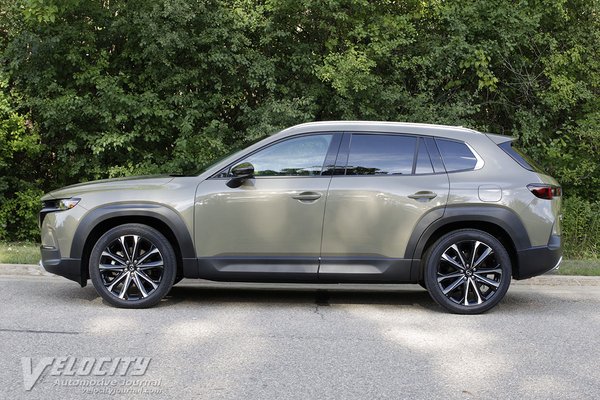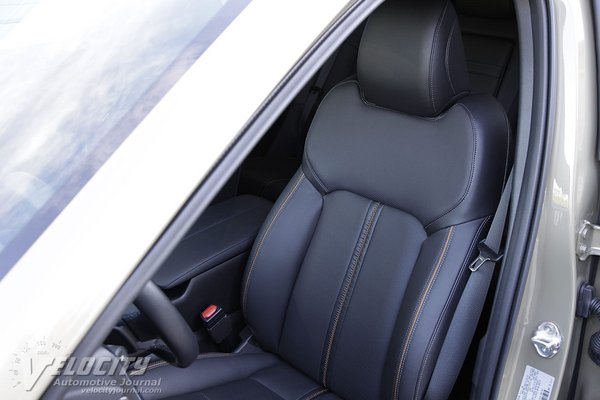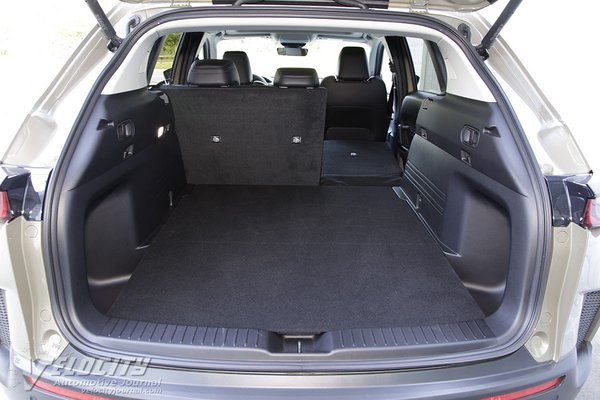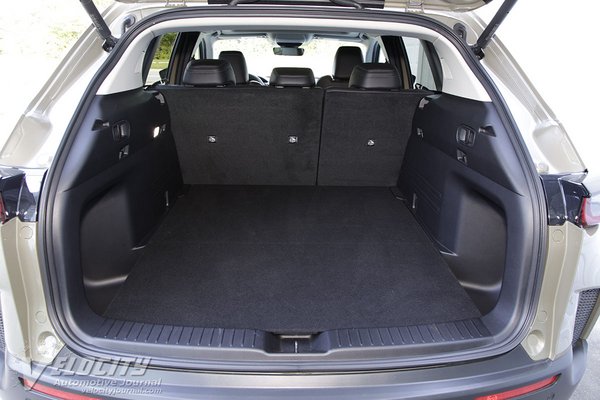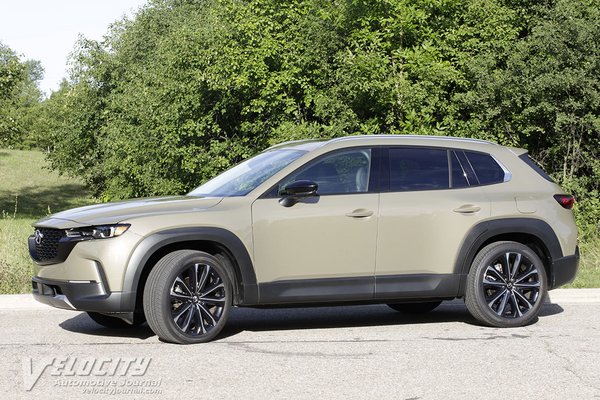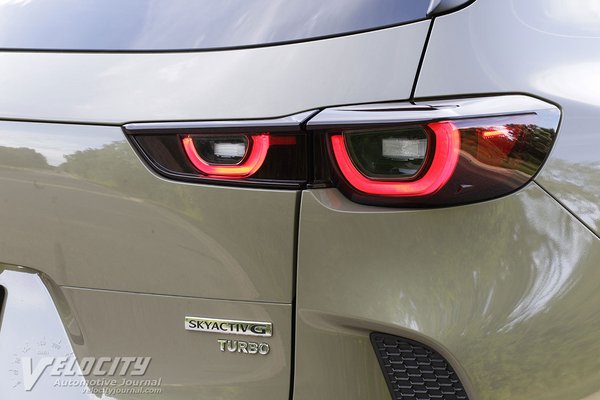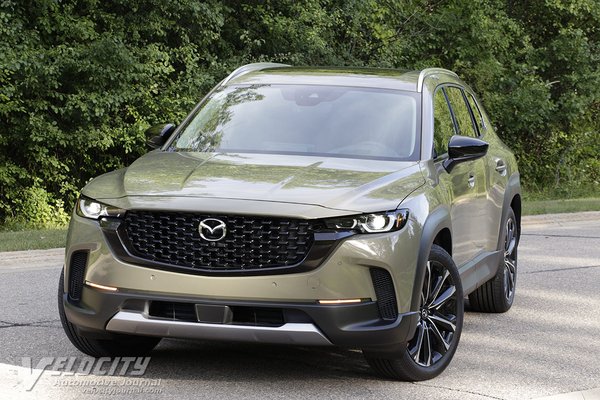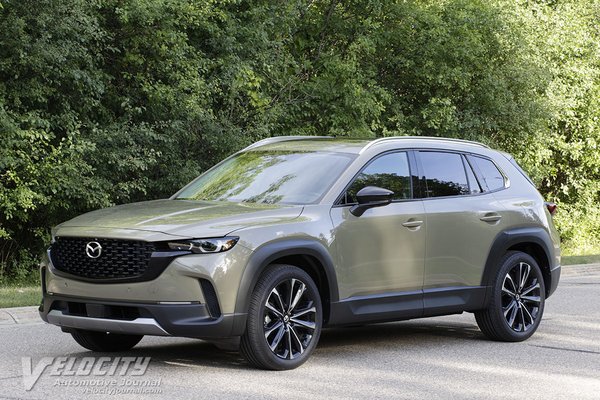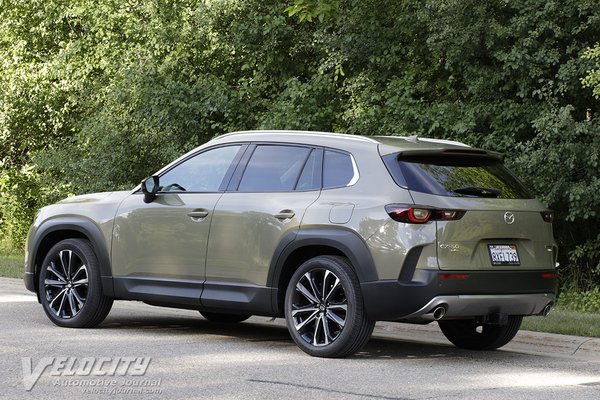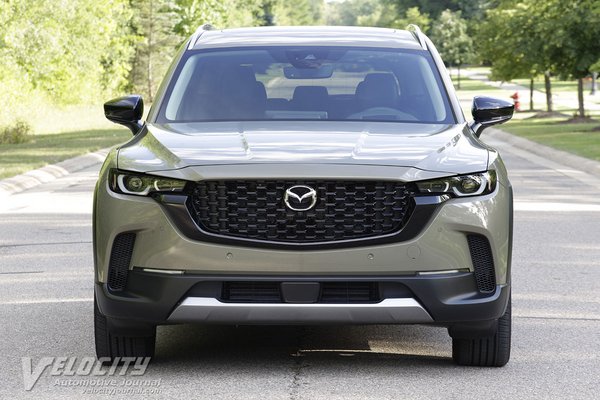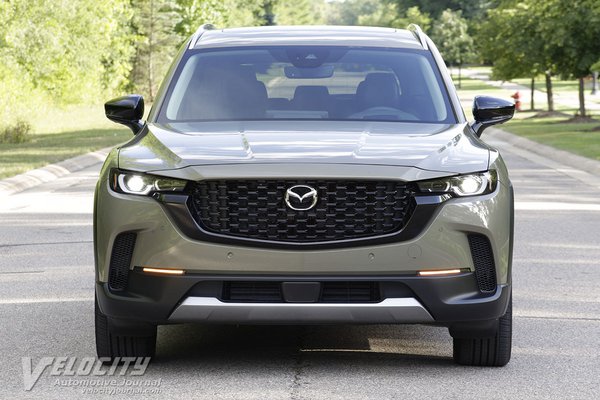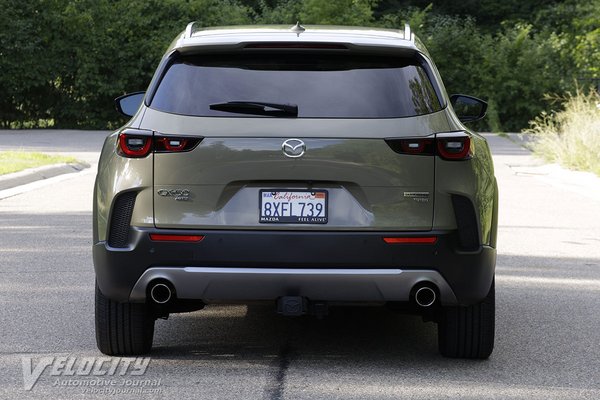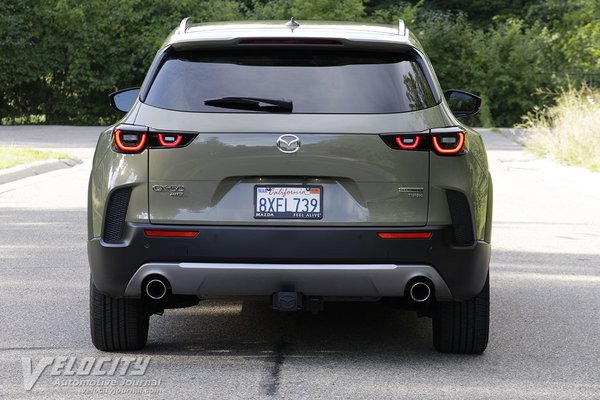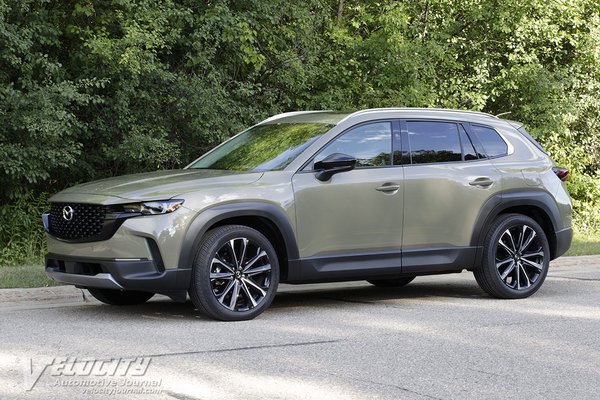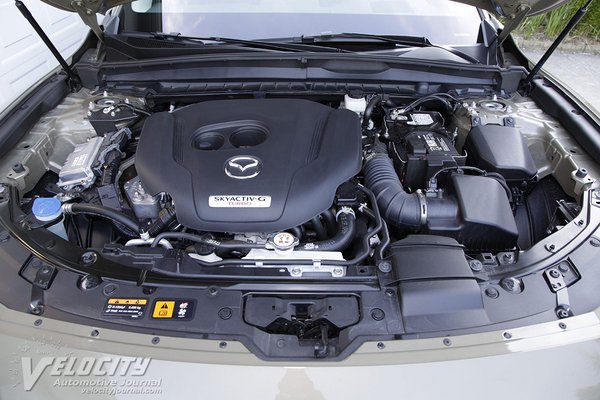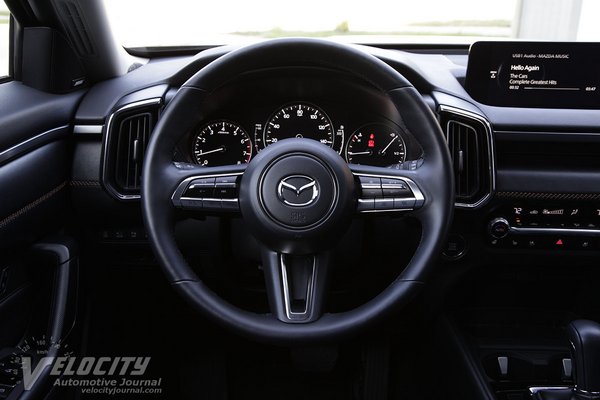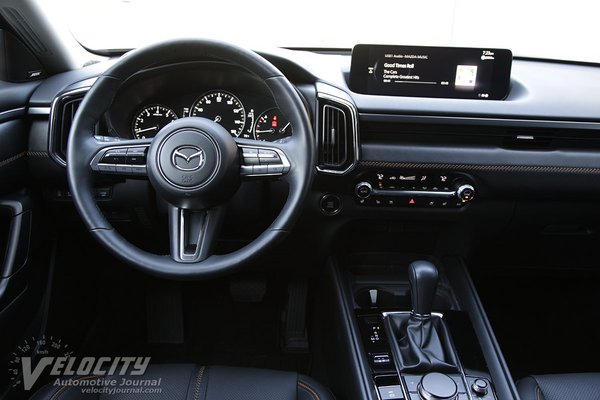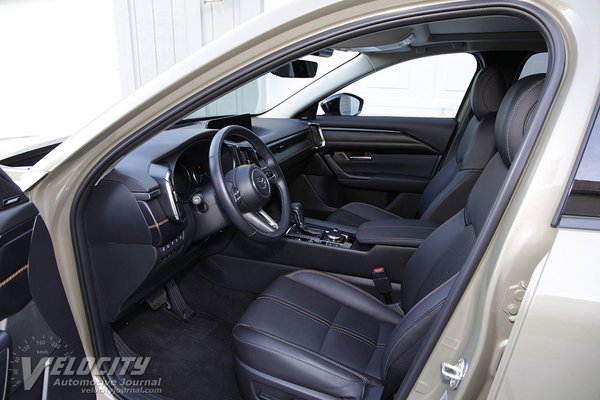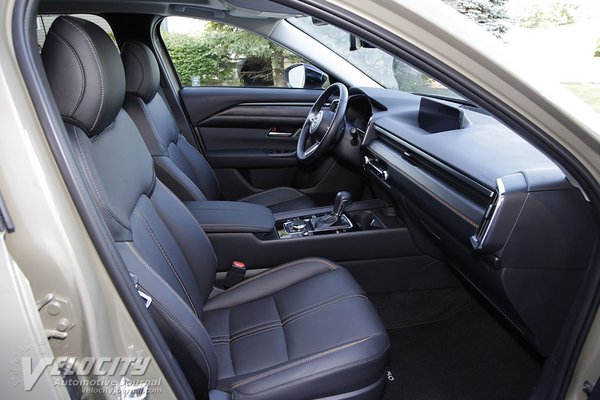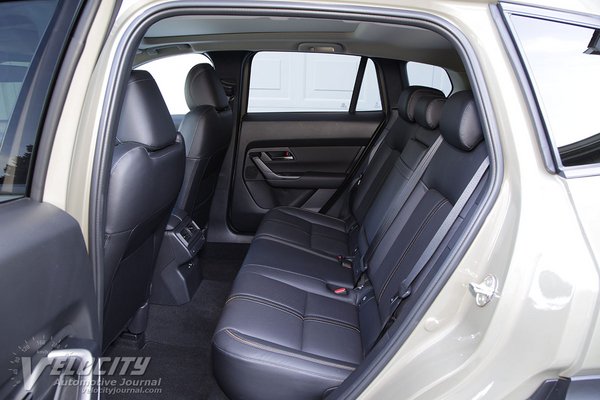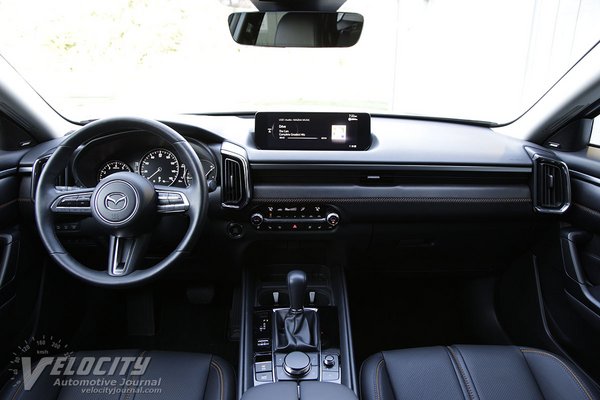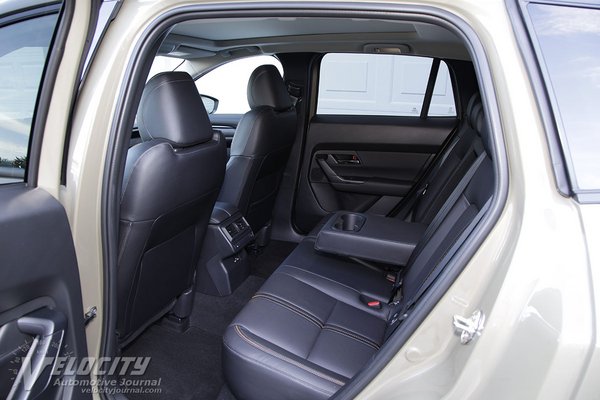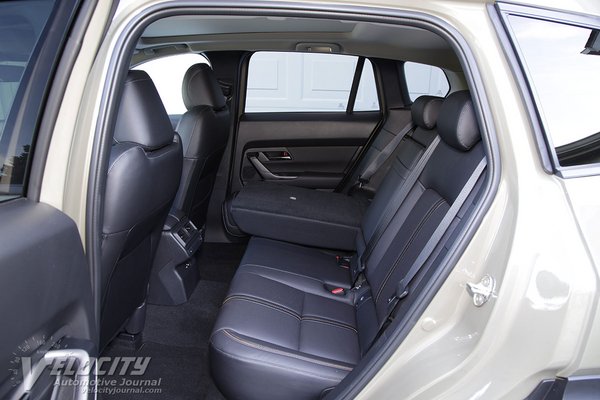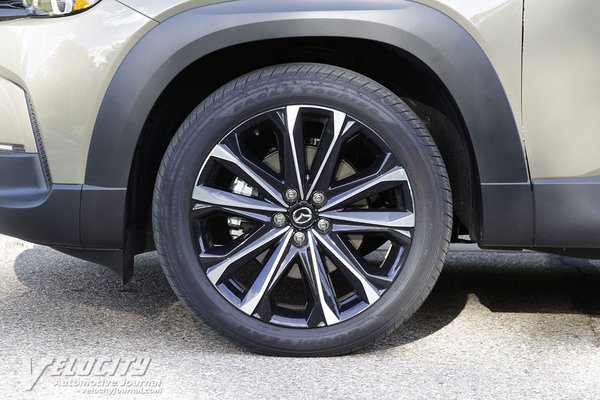2023 Mazda CX-50 Turbo Premium Plus
01/22/2023
Shahed Hussain
As SUVs have become among the best-selling vehicles in the US, Mazda has adjusted its model range accordingly. The new CX-50 compact SUV slots just above the popular CX-5 in Mazda's lineup. Built at the joint Mazda Toyota Manufacturing plant in Huntsville, AL, the CX-50 marks the return of Mazda to assembling vehicles in the USA.
Mazda offers the CX-50 in ten different variants, starting with the 2.5 S ($27,550) and ranging up to the 2.5 Turbo Premium Plus ($42,300). Note that not all CX-50 models are currently available according the Mazda's retail website. We tested the top CX-50 2.5 Turbo Premium Plus ($41,550) painted in the optional Zircon Sand ($395). Adding the delivery fee ($1,225) totaled up to $43,170. According to Mazda's current pricing, an equivalent CX-50 would cost $43,970. Notable standard equipment includes 20-in. alloy wheels, moonroof, adaptive front lights, power rear hatch, Bose(R) 12-speaker audio system, leather seats, power driver's and passenger seats, heated/ventilated front seats, heated rear seats, heated steering wheel, 10.25-in infotainment display, navigation, wireless Android Auto(TM) and Apple CarPlay(TM). Mazda's suite of active safety technologies includes radar cruise control, 360 deg. view camera, lane departure warning, lane keep assist, blind spot monitoring, and rear cross-traffic alert.
As in its other SUVs, Mazda has two version of its 2.5L inline-4: normally-aspirated or turbocharged, mated to a 6-speed automatic. The all-aluminum, direct-injected DOHC turbo is rated for 256-hp @ 5,000 RPM and 320 lb.-ft. @ 2,500 RPM on 93-octane gasoline. Power and torque drop to 227-hp/310 lb.-ft. on 87-octane fuel. Mazda has implemented engine idle-off technology on the 2.5L turbo, an increasingly common technology as automakers reduce fuel consumption and carbon dioxide emissions. The six-speed automatic sends power to all four wheels via Mazda's i-Activ AWD system and a 3.841:1 final drive ratio. Both fifth (0.707:1) and sixth (0.600:1) gear ratios are overdrive. EPA fuel consumption is rated at 23/29 MPG (city/hwy.). We averaged around 22 MPG in mixed urban and highway driving.
The CX-50 front suspension consists of MacPherson struts and a stabilizer bar. At the rear is a torsion beam setup with coil springs and dampers. An electrically-assisted rack-and-pinion steering system is geared for 2.7 turns lock-to-lock. Brakes are all discs: 12.8 in. dia. front and rear. Turbo CX-50s are available with 18-in. or 20-in. alloy wheels. Only the CX-50 Premium and Premium Plus models are fitted with larger 245/45-R20 all-season tires (Goodyear Eagle Touring). Curb weight ranges from 3,706 lbs. (non-turbo) to 3,907 lbs. (turbo). Towing capacity for turbo models is 3,500 lbs. but non-turbo models are limited to 2,000 lbs.
Mazda's interior design and materials are typically more premium than its direct Asian and American competitors, and the CX-50 doesn't disappoint. Polished aluminum trim accents the steering wheel, dash vents and center console. The gray leather seats are stitched in orange thread, with matching stitching across the dashboard. Most surfaces such as the dash, door panels, and center console are padded. Our test vehicle had a felt pad protruding from the left side of the dash, implying quality issues at Mazda's Alabama assembly plant.
The CX-50's leather-wrapped steering wheel has audio, cruise and phone controls integrated on the spokes. Mazda's configurable digital cluster displays a tachometer, speedometer, coolant temperature and fuel level. Smaller bar graphs next to the speedometer indicate fuel consumption and range. Mazda widescreen infotainment display projects out of the dashboard, but its low profile doesn't obstruct vision. The non-touchscreen display is controlled using a rotary knob and buttons on the center console. Seat heater/ventilation and steering wheel heater controls are set in the climate control panel. Dual cupholders are located ahead of the transmission shift lever.
Mazda's front seats provide decent lateral support, but the protruding stitched seam in the seatback can cause some discomfort. Headroom front and rear is restricted for occupants over 5'-10" due to the panoramic sunroof. Rear passengers benefit from acceptable legroom and good seat comfort. The center position is only suitable for short trips due to the hard seatback.
Mazda's turbo inline-4 delivers excellent low and midrange throttle response, moving the CX-50 swiftly through urban traffic. Highway acceleration is similarly robust, enabling quick passing in the left lane as needed. At full throttle, the 2.5L four sounds coarse as engine noise penetrates the passenger compartment. However, we rarely needed to floor the gas pedal since ample torque is available at low RPM. Torque steer was nonexistent, as the AWD system routed power to the rear wheels for enhanced traction and stability.
As a mainstream compact SUV, the CX-50 aims for competent but not sporty handling. On winding roads, the suspension exhibits mild understeer and minimal body roll, but around tight curves the front weight bias contributes to increased understeer. Mazda's engineers tuned the springs and dampers for excellent body control, despite its semi-independent rear axle. Where the CX-50's ride suffers is on patched highways; the rear axle is unable to absorb road impacts effectively, degrading passenger comfort. The CX-50's brakes provide firm pedal feel and progressive actuation. Steering is accurate with acceptable power assist. Wind and tire noise are unobtrusive at highway cruising speeds, making the CX-50 suited for extended road trips.
As Mazda has filled out its SUV lineup, model overlap is a real concern. As an example, the CX-5 and CX-50 are similar in size and price, although Mazda is marketing the CX-50 as an alternative to the Subaru Outback. We think the CX-5's calmer ride and marginally lower price make it easy to recommend over the CX-50. That doesn't make the CX-50 an unreasonable option, it's just that Mazda has a superior alternative in its lineup.

